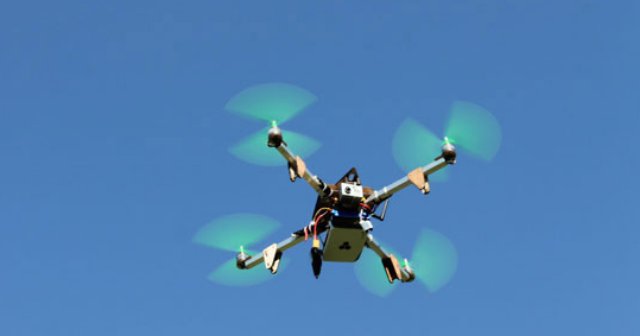 Robot enthusiast Adam Conway decided to build a “Wi-Fi hotspot” QuadRotor. Conway, a product manager at Aerohive, which provides corporate IT networks, used a quadrotor frame, some plywood, and an old router from work to built a UAS that can provide a Wi-Fi connection over the local LTE phone network. It can even link up to a corporate virtual private network for extra security.
Robot enthusiast Adam Conway decided to build a “Wi-Fi hotspot” QuadRotor. Conway, a product manager at Aerohive, which provides corporate IT networks, used a quadrotor frame, some plywood, and an old router from work to built a UAS that can provide a Wi-Fi connection over the local LTE phone network. It can even link up to a corporate virtual private network for extra security.
He got the idea two years ago when the open source autopiloting programme Ardupilot appeared. Conway had always been interested in robots, as it was his major in college. So he decided to build a UAS, and then he had a conversation with a co-worker about what to do with it. “The guy said, ‘you have to put Wi-Fi on this UAS,’” he told DNews.
After a few false starts — he crashed at least one and destroyed a router before he got it right — he had his Wi-FI-capable UAS. The whole thing cost only a hundred dollars to build, and would only be twice that if he’d paid for the router.
The quadrotor is a fun platform, Conway said, but it isn’t that efficient as it can only stay up for a short time. He wants to build one that can hover for more than an hour, or have two in tandem that could provide continuous Wi-Fi service. To that end he might eventually go with a more airplane-like design.
More seriously, there are many uses for a Wi-Fi UAS. Certainly in a post-disaster scenario, such as after a tornado or hurricane, it would help rescue workers to have internet and phone access in places where many cell towers are down. For ordinary people it would provide Wi-Fi in places where there just doesn’t happen to be a connection that can link to a corporate VPN, more than one road warrior would find that useful for the extra security, rather than trusting the hotspot at a Starbcks.
For now though, he wants to have fun with it. “My goal is to provide Wi-Fi service at the next company picnic,” he said. “We haven’t been in places that let you fly remote controlled planes but I am lobbying for it.”
Source: News Discovery

How do you rely on wifi with a system that can only fly for around 10 minutes? A quadrotor worth $100 may also not be the most reliable. Perhaps this could work with a larger, more costly system (but then does the idea lose any of its desirability?) or a tethered one (launch it from the ground, feeding power constantly from a generator of vehicle, raise to 100ft or so where the LTE network’s signal is available, but in many areas it may not be…).
Interesting concept but needs to be developed further.